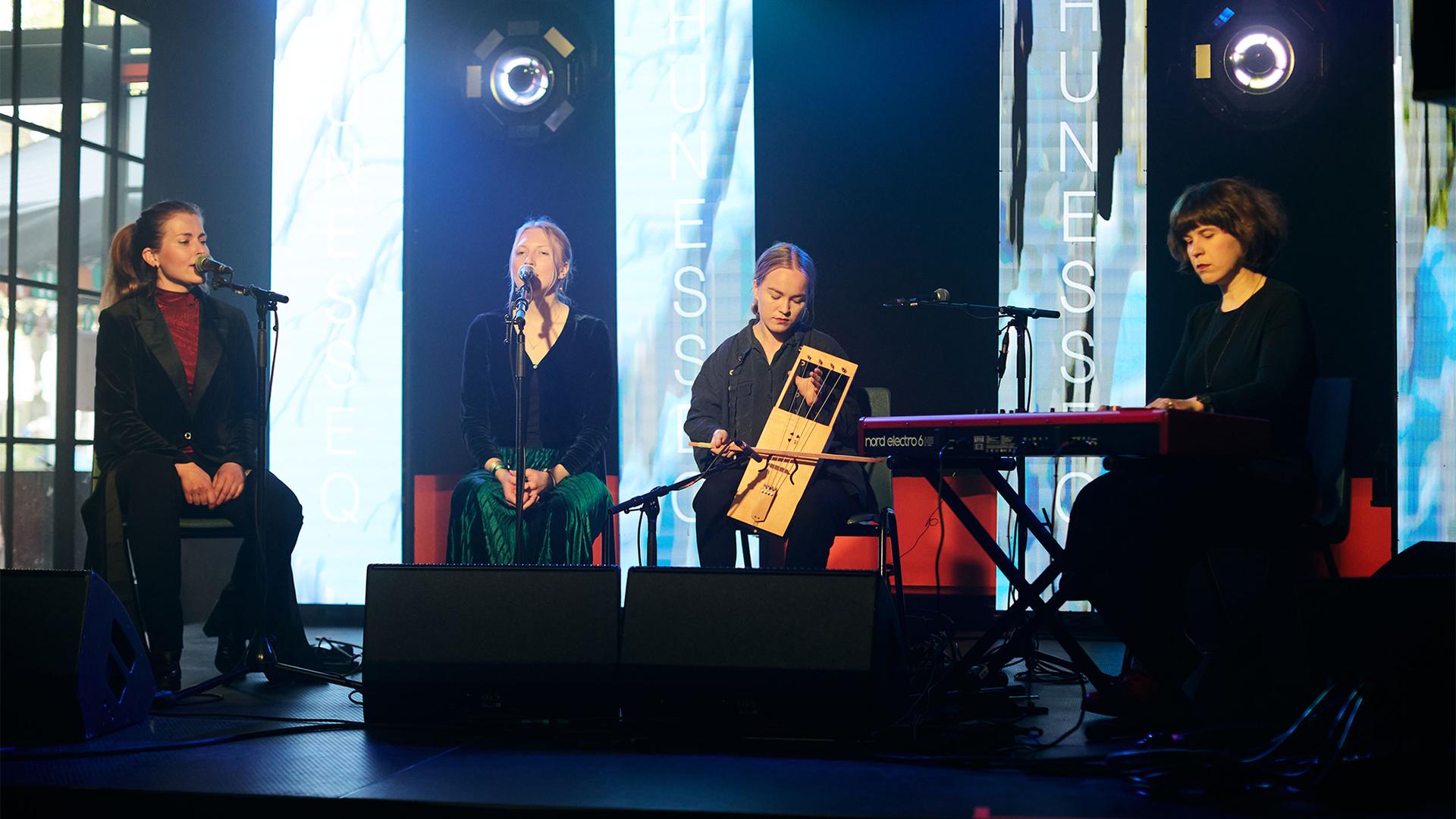All-women Estonian quartet brings ancient folk music to the forefront
In Estonia’s capital, Tallinn, the vibrant industrial warehouse district of Telliskivi is a trendy musical hub once the site of a locomotive repair factory. Inside a venue called Must Saal, the harmonies of four Estonian women musicians brought the crowd to an instant hush during the Tallinn Music Week festival.
The quartet’s name, 6hunesseq, means “humidity” in the South Estonian language of Võro. During the concert, they sang old folk hymns in traditional Baltic-Finnish styles known as runo to a standing-room audience. The vocalists were accompanied by a keyboard and an instrument called Hiiu kannel in Estonian or Tagelharpa — a horsehair harp that’s also played in Sweden.
The small Baltic nation of Estonia is experiencing a folk music renaissance of sorts, with young musicians bringing traditional songs and instruments to the forefront. Much of it involves reasserting a unique Estonian identity and preserving the country’s ancient heritage.
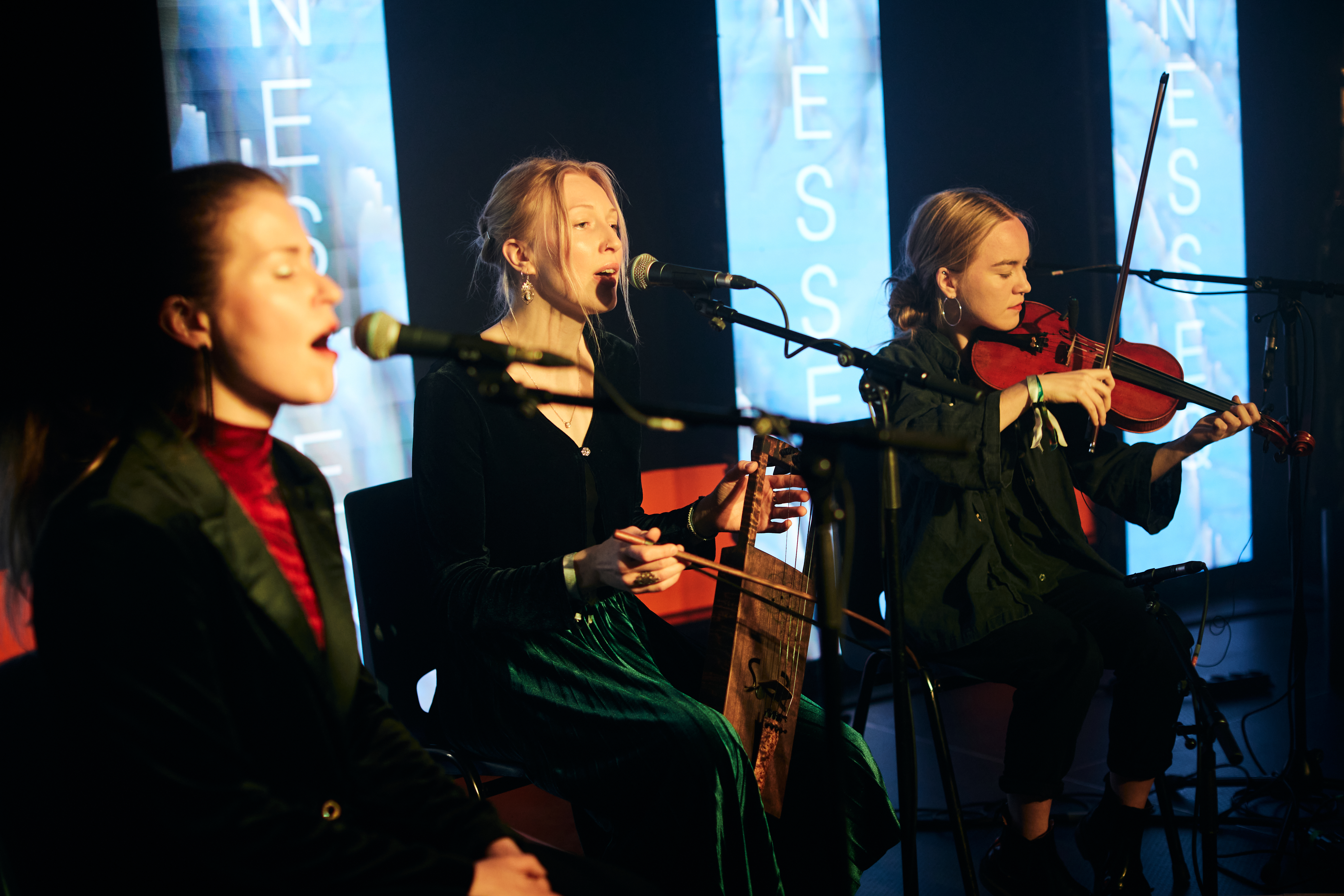
The musical group’s keyboardist and organ player, Kaisa Kuslapuu, explained how the band formed.
“There was an event in Estonia that brought together all the folk music students from different music universities,” Kuslapuu said. “I met these two amazing singers. And I immediately fell in love with their voices. And I thought, I need to combine this and find a way to do something with them.”
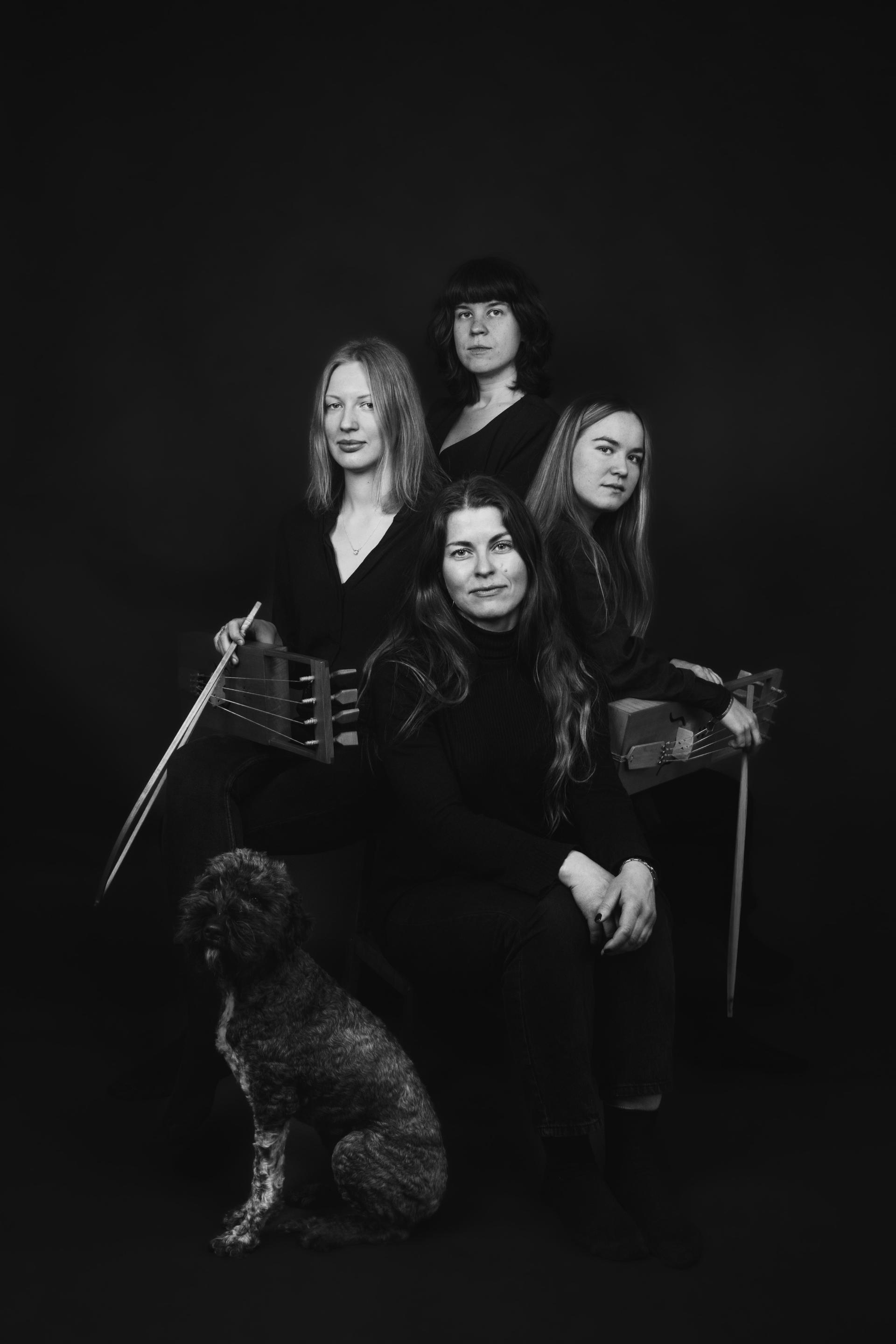
In their music, the women of 6hunneseq also weave in the uniquely Estonian tradition of regilaul — a poetic rhythm based on the continuous repetition of eight-syllable verses in a style known as runo.
“It’s hard to say how old [runo music] is, but it’s more or less 2,000 years old,” Selgall explained. “So, it really has some old mythical elements in it. It’s also meditative, and the melody is usually quite simple. So, it’s something really nice, also to just go into and let it carry you away.”
Greta Liisa Grünberg sings and plays the horsehair harp for the band. “It was just a yearning for connecting with my culture, with my past, just connecting with my roots,” she said. “And I’ve always searched for something with a deeper meaning. So, I felt that folk music is the way to go.”
An independent culture
For centuries, music brought communities together in Estonia. “Music has been a tool for being able to just forget all the hard field work and managing the farm,” Grünberg said. “In the olden days, it was crucial to have this thing to balance [life], and people would play so much music at home.”
After five decades of Soviet occupation — from 1940-1991 — Estonians became intensely proud of their heritage and tried to highlight how they represent a separate and independent country and culture. This led to a revival of music that is deeply rooted in Estonia, much of it going back generations.
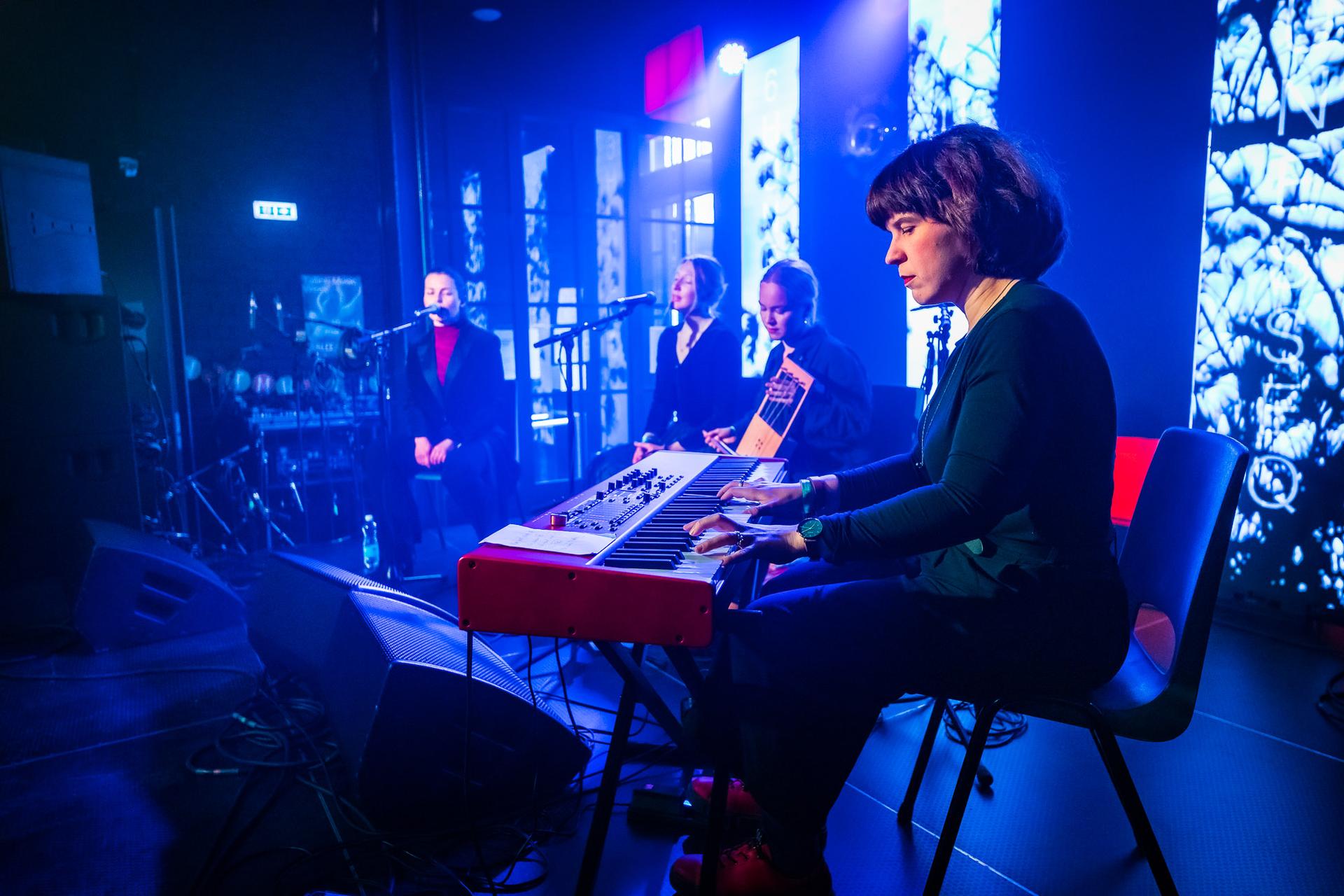
The resurgence of folk music began in the late-1980’s, a few years before Estonia gained independence from the former Soviet Union. In recent years, it’s become popular among a younger generation that is adding newer sounds.
Oliver Berg, a young Estonian cultural expert, described the popularity of folk music today. He works for the Tartu 2024 Foundation in the southern Estonian city of Tartu, which has been chosen as the European capital of Culture for 2024.
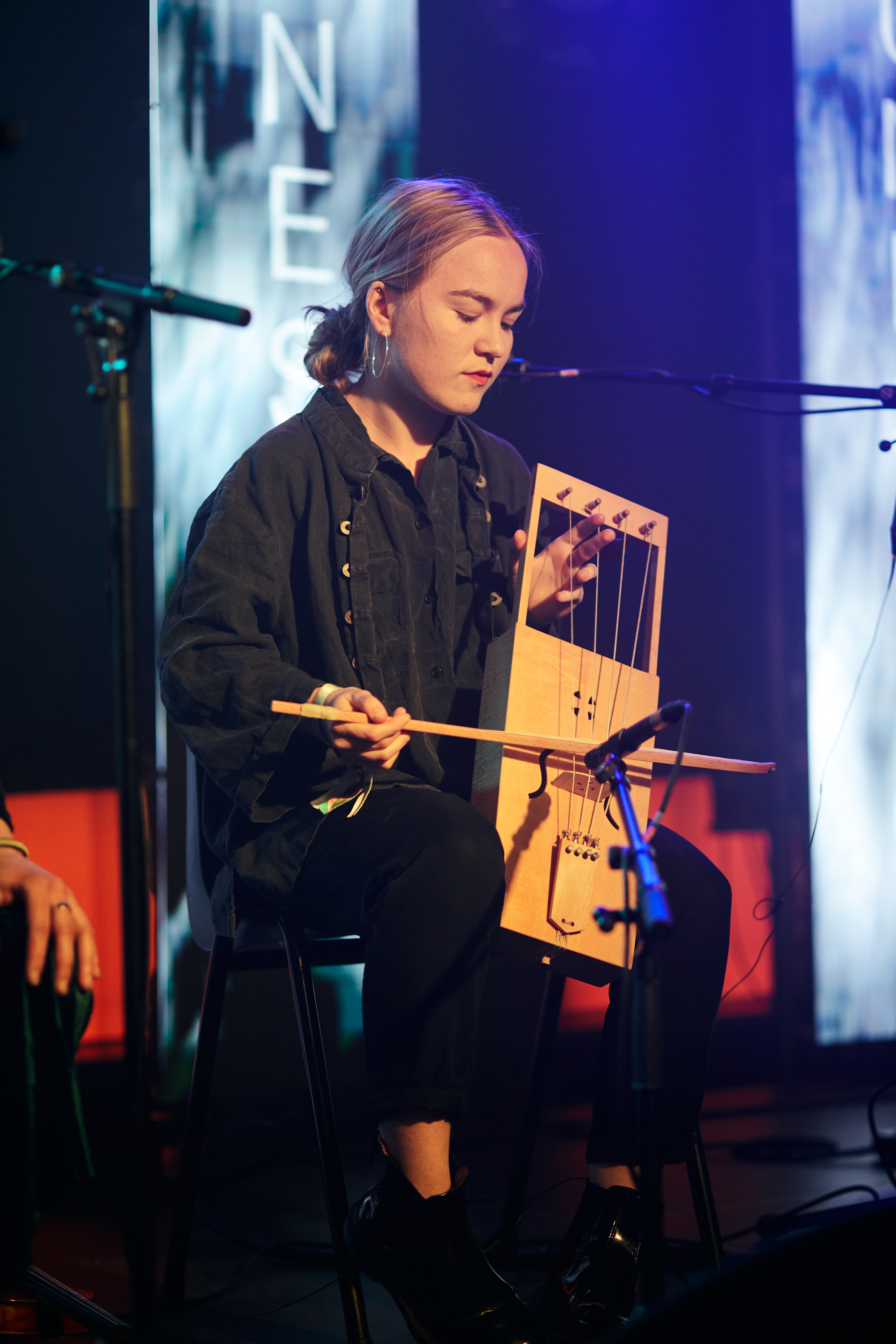
He said that under Soviet rule, Estonians used music as an act of rebellion. For example, Estonians revived their forbidden national anthem in front of Soviet authorities as a form of protest.
“We are a singing nation,” Berg said, continuing, “some of the songs had a very strong, patriotic background that kept the spark of a collective identity alive. Through what we refer to as the singing revolution, we managed to sing ourselves free. Well, of course, it was [the] global political system that made the window of opportunity happen. People started gathering for songs at the song festival grounds.”
These days, Estonia’s University of Tartu Viljandi Culture Academy teaches the country’s next generation about musical heritage and folk music. The town of Viljandi is also home to the Viljandi Folk Music Festival, which draws tens of thousands of people annually.
In their recorded single, “küläkene väikokõnõ,” the women of 6hunesseq blend their voices into a richly textured melody as they sing folk verses accompanied by traditional instruments.
The song turns into a lively yet contemplative piece that slowly builds into a crescendo with the strings and then softens into a quiet hymn.
“Maybe our music makes people think or feel something that they haven’t felt for a long time,” Grünberg said, “like a connection with something very beautiful.”
